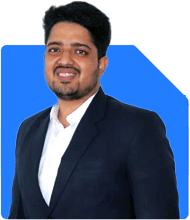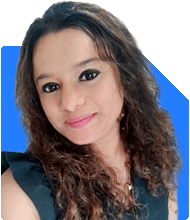Should I invest 1.5 lakhs monthly in SIPs, ETFs, and US stocks for long-term growth?
Ramalingam Kalirajan |10872 Answers |Ask -Follow
Mutual Funds, Financial Planning Expert - Answered on Nov 04, 2024
He has an MBA in finance from the University of Madras and is a certified financial planner.
He is the director and chief financial planner at Holistic Investment, a Chennai-based firm that offers financial planning and wealth management advice.... more

Sir , 1.5lakh monthly SIP divided in large mid and small cap. Rest 50k in ETFs and US stocks. Is it a good strategy in long term ,10-15year? Thankyou
1. SIP Allocation Across Large, Mid, and Small Cap Funds
Investing Rs 1.5 lakh monthly in a diversified mix of large, mid, and small-cap funds can be a productive approach. This diversified allocation has several benefits:
Growth Potential: Mid and small-cap funds provide the opportunity for higher growth compared to large-cap funds. With a long-term horizon, you have time to weather any short-term volatility.
Stability from Large Caps: Large-cap funds add stability. They tend to be less volatile than mid and small caps, which helps maintain balance within your portfolio.
Balanced Returns: By spreading your SIPs across these categories, you’re hedging risk while maximizing growth potential. Each category performs differently depending on market conditions, so a mixed approach balances returns.
2. Disadvantages of ETFs in a Long-Term Portfolio
Although ETFs can be attractive, they may not be ideal for a long-term, goal-oriented investment strategy. Here’s why:
Lack of Active Management: ETFs mirror an index and lack active management. This can limit performance during economic shifts as they can’t adapt to market changes or take advantage of specific opportunities like actively managed funds.
No Downside Protection: With ETFs, you follow the market's highs and lows directly, which may expose your portfolio to greater risks. Actively managed funds can provide better downside protection.
Tax Implications: ETFs also incur capital gains tax, which reduces returns, especially for investors in higher tax brackets. Actively managed funds may offer tax-efficiency options.
3. Direct Investments in US Stocks and Long-Term Viability
Investing in US stocks can bring geographic diversification and exposure to sectors not as prevalent in India. However, a few considerations are crucial:
Currency Exchange Risk: Returns can be impacted by fluctuations in exchange rates. Rupee depreciation could enhance returns, while appreciation could reduce them.
Economic Conditions: Economic shifts in the US affect the performance of these stocks. Being mindful of global trends is essential.
Taxation on US Stocks: Gains from US stock investments attract foreign tax implications. These tax rules differ from domestic investments, and understanding them is necessary to avoid surprises.
Importance of Using Regular Mutual Funds Over Direct Plans
While direct plans may seem appealing due to lower costs, investing through a Certified Financial Planner (CFP) using regular funds offers several advantages:
Professional Guidance: With a CFP, you gain access to expert insights on asset allocation and market trends. This guidance can align your investments with changing life stages and goals.
Regular Reviews: The financial landscape shifts regularly. With regular plans managed through a CFP, your portfolio is monitored and adjusted as needed. This oversight optimises your returns over time.
Focused Strategy: A CFP can help align your investment mix according to your unique financial goals. Direct plans place the full responsibility on you, which can be challenging without extensive knowledge.
Reviewing Your Investment Strategy Annually
An annual review of your investments with a Certified Financial Planner can add substantial value to your portfolio:
Rebalancing Portfolio: Market performance varies across asset classes. Regularly rebalancing your portfolio ensures you maintain the desired allocation in line with your goals.
Capitalising on Market Trends: A CFP can identify new opportunities or areas of risk, allowing you to make timely adjustments to your strategy.
Adjusting to Life Changes: Major life events can impact your financial goals. By reviewing your plan annually, you ensure it aligns with any new financial commitments or lifestyle changes.
Tax Implications for Equity and Debt Funds
Understanding the tax structure is key in maximising your returns. Here’s how capital gains taxation works:
Equity Mutual Funds: Long-term capital gains (LTCG) over Rs 1.25 lakh are taxed at 12.5%. Short-term capital gains (STCG) are taxed at 20%.
Debt Mutual Funds: LTCG and STCG are taxed as per your income tax slab. Knowing the tax implications will help you choose investments more tax-efficiently for long-term growth.
Emergency and Contingency Planning
It’s essential to maintain an emergency fund alongside your investments:
Contingency Fund: This fund should ideally cover 6-12 months’ expenses. Keep it in liquid assets for easy access during unforeseen events.
Medical and Health Planning: Unexpected medical costs can strain your portfolio. Consider separate investments or health insurance to cover medical expenses.
Final Insights
Your investment approach, focused on a diversified SIP with exposure to different markets, is a strong foundation. By ensuring an annual review with a Certified Financial Planner, you can keep your portfolio aligned with your goals, account for changing market dynamics, and mitigate risks. Remember, staying disciplined and adaptable in your strategy will help you reach your long-term objectives.
Best Regards,
K. Ramalingam, MBA, CFP,
Chief Financial Planner,
www.holisticinvestment.in
https://www.youtube.com/@HolisticInvestment
You may like to see similar questions and answers below
Omkeshwar Singh | Answer |Ask -Follow
Head, Rank MF - Answered on Jun 01, 2022
Nikunj Saraf | Answer |Ask -Follow
Mutual Funds Expert - Answered on Mar 29, 2023
Jinal Mehta | Answer |Ask -Follow
Financial Planner - Answered on Mar 18, 2024
Radheshyam Zanwar |6735 Answers |Ask -Follow
MHT-CET, IIT-JEE, NEET-UG Expert - Answered on Dec 06, 2025
Dr Nagarajan J S K |2576 Answers |Ask -Follow
NEET, Medical, Pharmacy Careers - Answered on Dec 06, 2025
Mihir Tanna |1090 Answers |Ask -Follow
Tax Expert - Answered on Dec 06, 2025
Ramalingam Kalirajan |10872 Answers |Ask -Follow
Mutual Funds, Financial Planning Expert - Answered on Dec 06, 2025
Radheshyam Zanwar |6735 Answers |Ask -Follow
MHT-CET, IIT-JEE, NEET-UG Expert - Answered on Dec 06, 2025
Radheshyam Zanwar |6735 Answers |Ask -Follow
MHT-CET, IIT-JEE, NEET-UG Expert - Answered on Dec 06, 2025
Radheshyam Zanwar |6735 Answers |Ask -Follow
MHT-CET, IIT-JEE, NEET-UG Expert - Answered on Dec 06, 2025
Dr Dipankar Dutta |1837 Answers |Ask -Follow
Tech Careers and Skill Development Expert - Answered on Dec 05, 2025
Dr Shyam Jamalabad |108 Answers |Ask -Follow
Dentist - Answered on Dec 05, 2025
Dr Shyam Jamalabad |108 Answers |Ask -Follow
Dentist - Answered on Dec 05, 2025



























